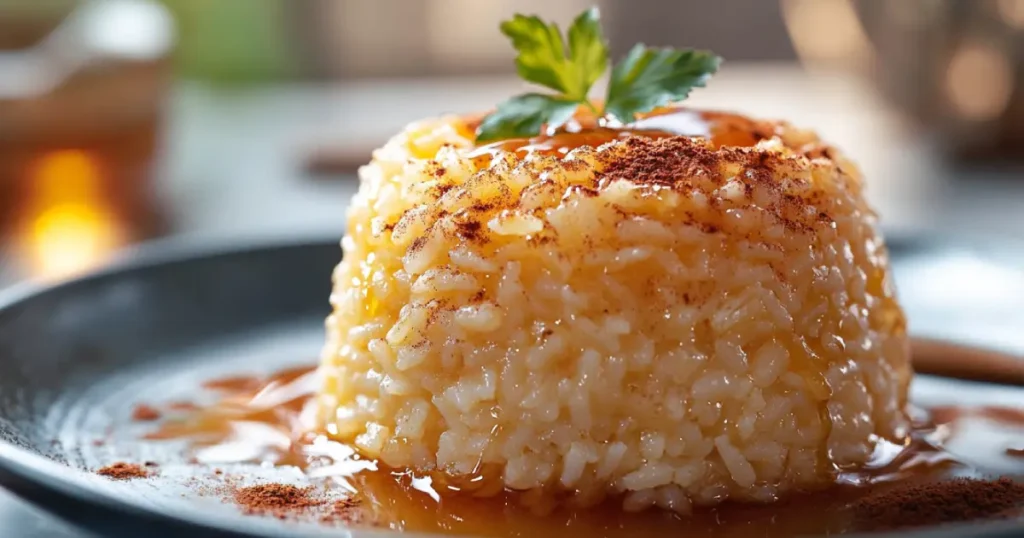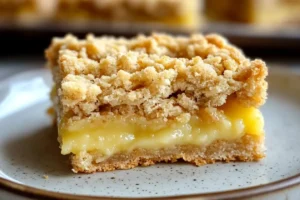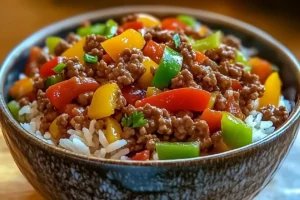Sweet rice is more than just an ingredient—it’s a canvas for creating culinary masterpieces. From comforting puddings to chewy desserts and savory dishes, sweet rice recipes open the door to a world of flavor and tradition. This article explores everything you need to know about sweet rice recipes: what makes them special, how to prepare them, and the magic of combining simple ingredients into unforgettable dishes. Let’s dive into this exciting journey, starting with the basics.
Outline
Introduction to Sweet Rice Recipes
Sweet rice recipes are beloved worldwide for their delightful combination of taste, texture, and versatility. Whether you’re a fan of rich desserts or hearty meals, sweet rice can be the star of your culinary creations.
What is Sweet Rice?
Sweet rice, also known as glutinous rice or sticky rice, is a unique variety of short-grain rice renowned for its naturally sticky texture when cooked. Despite its name, it isn’t particularly sweet on its own but develops a mild, sweet flavor during cooking. This characteristic makes it perfect for desserts and savory dishes alike.
Why Sweet Rice is Loved Across Cultures
Sweet rice has a long-standing presence in global cuisines. From Asian classics like mochi and sticky rice pudding to Latin American arroz con leche, sweet rice has made its mark. Its ability to complement diverse ingredients—from tropical fruits to warm spices—makes it a pantry staple for adventurous cooks.
Benefits and Versatility of Sweet Rice
Sweet rice isn’t just tasty; it’s also packed with benefits. Rich in manganese and fiber, it supports digestion and bone health. Moreover, sweet rice is naturally gluten-free, making it an excellent choice for people with dietary restrictions. Its versatility is unmatched, as it effortlessly transitions from desserts to savory dishes, proving itself a true culinary gem.
Understanding Sweet Rice and Its Key Ingredients
To master any sweet rice recipe, it’s important to understand the key ingredients and what makes sweet rice so special. Knowing its properties and pairing it with the right flavors can elevate your dishes from good to unforgettable.
What Makes Sweet Rice Unique?
Sweet rice, often called glutinous rice, owes its sticky texture to its high starch content. When cooked, this starch creates the signature chewiness that makes it perfect for both sweet and savory dishes. Unlike regular rice, which separates into individual grains, sweet rice clumps together, forming a soft, satisfying bite.
Despite its distinct texture, sweet rice doesn’t have an overpowering flavor. Instead, it acts as a blank canvas, readily absorbing the richness of coconut milk, the zestiness of citrus, or the warmth of spices. This adaptability makes it the cornerstone of countless sweet rice recipes.
Sweet Rice vs. Regular Rice: Key Differences
While sweet rice and regular rice might seem similar, they have distinct differences:
- Texture: Sweet rice is sticky and cohesive, while regular rice is fluffy and separate.
- Flavor: Sweet rice has a mild, slightly sweet taste, unlike the neutral flavor of regular rice.
- Cooking Method: Sweet rice often requires soaking before cooking to achieve its signature texture.
By understanding these differences, you’ll know why sweet rice is indispensable for recipes like sticky rice pudding and Thai mango sticky rice.
Essential Ingredients for Sweet Rice Recipes
To create the perfect sweet rice recipe, having the right ingredients is crucial:
1. Sweet Rice Flour
- Quantity: 2 cups
- Description: Made from glutinous rice, this flour is perfect for desserts like mochi or pancakes. Its sticky texture creates a delightful chewiness.
2. Coconut Milk
- Quantity: 1 cup
- Description: This creamy, rich liquid enhances the texture of sweet rice and adds a tropical flavor. Use full-fat coconut milk for the best results.
3. Sugar or Honey
- Quantity: 1/3 cup (sugar) or 1/4 cup (honey)
- Description: Sweeteners like sugar or honey elevate the subtle sweetness of the rice. Adjust to taste depending on the dessert.
4. Spices
- Quantity:
- Cinnamon: 1/2 teaspoon
- Cardamom: 1/4 teaspoon
- Nutmeg: A pinch
- Description: Warm spices like cinnamon, cardamom, and nutmeg add depth and complexity, transforming a simple sweet rice dish into something special.
5. Fresh Fruits
- Quantity: 1/2 cup (diced mango, banana, or any preferred fruit)
- Description: Fresh fruits like mango or banana perfectly complement the mild flavor of sweet rice. Use ripe fruits for the best taste.
Storage Tip
To maintain the freshness and quality of your ingredients:
- Store sweet rice and rice flour in airtight containers.
- Keep them in a cool, dry place to preserve their quality for months.
With these ingredients and tips, you’re ready to make delicious sweet rice recipes every time!
Classic Sweet Rice Recipes
Classic sweet rice recipes are timeless for a reason—they bring comfort, tradition, and unbeatable flavor to the table. Let’s explore a few that are loved around the globe.
Sticky Rice with Mango: A Thai Favorite
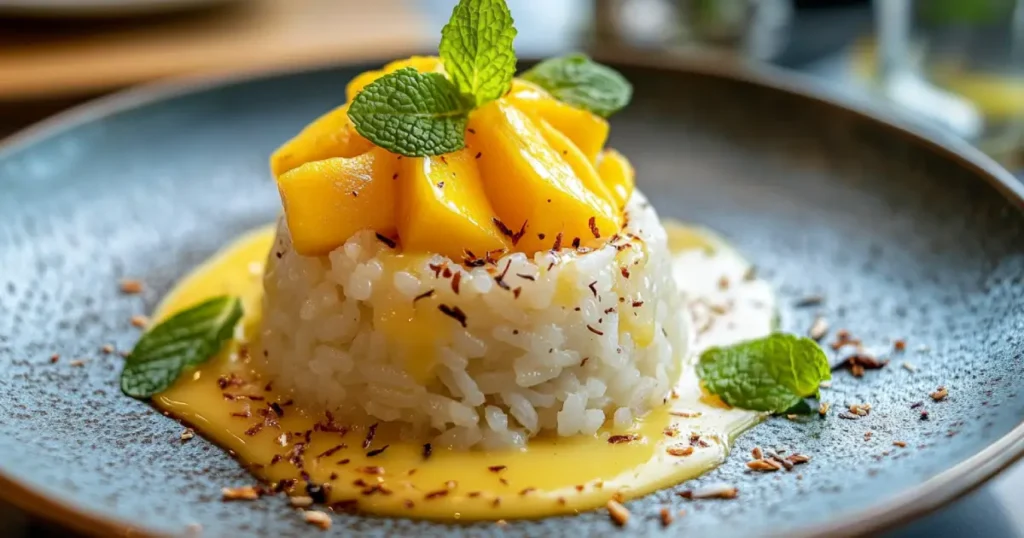
This sweet rice recipe is a crowd-pleaser. Sticky rice is steamed to perfection, paired with ripe mango slices, and drizzled with a luscious coconut sauce. The natural sweetness of the mango complements the creamy rice, creating a balance of flavors that’s nothing short of heavenly.
Sweet Rice Pudding: Comfort in a Bowl
Sweet rice pudding is the ultimate comfort food. Cook sweet rice with milk, sugar, and a touch of vanilla to create a rich, creamy dessert. Adding spices like cinnamon or cardamom elevates its flavor. Serve it warm on a chilly evening or chilled for a refreshing summer treat.
Sweet Rice Balls: Traditional Asian Treats
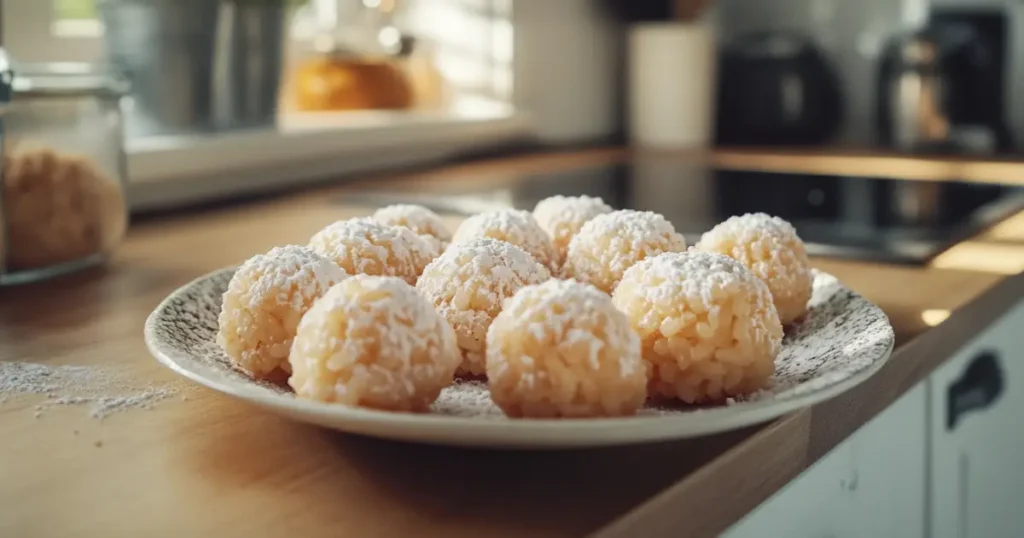
Known as tangyuan or mochi in different cultures, these chewy rice balls are filled with delightful surprises. Red bean paste, peanut butter, or sesame seeds are popular fillings. They’re often served in sweet syrup or coconut milk for added indulgence.
These dishes highlight the versatility of sweet rice and why it’s cherished in so many kitchens worldwide.
Creative Desserts Using Sweet Rice Flour
Sweet rice flour brings a unique twist to desserts, offering a delightful chewiness and rich texture. These recipes are perfect for anyone looking to experiment with something new or add a modern flair to a classic sweet rice recipe.
Mochi: Japanese Chewy Delights
Mochi, a famous Japanese treat, is the quintessential sweet rice recipe for dessert lovers. Made by steaming and pounding sweet rice flour with sugar, this chewy delight is often filled with ice cream, red bean paste, or fresh fruits. Its soft, stretchy texture makes it a fun and satisfying snack or dessert.
Sweet Rice Flour Doughnuts: A Modern Twist
If you’re a fan of doughnuts, try making them with sweet rice flour. These doughnuts have a crisp exterior and a tender, chewy center that sets them apart from traditional recipes. Pair them with a simple glaze or sprinkle them with powdered sugar for a delightful treat.
Rice Flour Pancakes: A Breakfast Favorite
Transform your morning routine with pancakes made from sweet rice flour. They’re light, fluffy, and naturally gluten-free. Add fruits or chocolate chips to the batter for extra flavor, and drizzle with honey or syrup for the perfect start to your day.
Baking with Rice Flour: Tips and Tricks
Baking with rice flour can open up a world of possibilities, but it requires a bit of finesse to get the texture just right. Whether you’re using it in a sweet rice recipe or experimenting with gluten-free baked goods, these tips will help you achieve the perfect result.
Balancing Wet and Dry Ingredients
Sweet rice flour is highly absorbent, which means it can soak up liquids quickly. To avoid dry or crumbly results, it’s essential to balance the wet and dry ingredients. For example, add an extra egg or a splash of milk to maintain moisture in the batter.
Common Mistakes and How to Avoid Them
Overmixing is a common mistake when baking with sweet rice flour. Unlike wheat flour, sweet rice flour doesn’t contain gluten, so overmixing can lead to dense or gummy textures. Mix ingredients just until combined for the best results.
Substituting Regular Flour with Rice Flour
If you’re experimenting with replacing regular flour in recipes, start by substituting a portion—about 25%—with sweet rice flour. This method allows you to enjoy its chewy texture without compromising the integrity of your dish. Gradually increase the amount as you become more comfortable working with it.
For savory rice flour ideas, check out Cheesy Rice Recipes to expand your repertoire.
Savory Recipes Featuring Sweet Rice
While sweet rice often steals the show in desserts, it’s also a versatile ingredient for savory dishes. From dumplings to pilafs, the unique texture and flavor of sweet rice elevate simple recipes into satisfying meals.
Sweet Rice Dumplings with Savory Fillings
Sweet rice dumplings, also known as sticky rice dumplings, are a staple in many Asian cuisines. These soft, chewy parcels are typically filled with savory ingredients like minced vegetables, spiced meats, or even seafood. Whether steamed or boiled, their sticky texture pairs beautifully with soy sauce or a tangy dipping sauce.
Rice Flour Pancakes for Snacks or Meals
Savory rice flour pancakes are a quick and easy sweet rice recipe for busy days. Combine sweet rice flour with chopped vegetables, herbs, and a pinch of salt to create a batter. Cook the pancakes until they’re golden and crisp, then serve them with yogurt or chutney for a delicious appetizer or light lunch.
Sweet Rice in Savory Pilaf Dishes
Incorporating sweet rice into a pilaf dish adds an irresistible richness. Cook the rice with spiced chicken, caramelized onions, and a hint of garlic for a hearty, aromatic meal. The sticky texture of sweet rice absorbs all the flavors, making each bite deeply satisfying.
For more inspiration on savory rice dishes, consider checking out Cheesy Rice Recipes on Buttery Recipes.
Cultural Variations of Sweet Rice Recipes
Sweet rice is a beloved ingredient across the globe, and its versatility shines in the unique ways it’s used in different cuisines. From desserts to savory staples, sweet rice is a key player in countless traditional dishes.
Asian Sweet Rice Dishes: Mochi, Kheer, and More
Asia offers a treasure trove of sweet rice recipes. Japanese mochi, Indian kheer, and Korean tteok are just a few examples of how sweet rice is celebrated. These dishes highlight its ability to take on both chewy and creamy textures, depending on the preparation method.
European Sweet Rice Adaptations
European cuisines have embraced sweet rice in their own way. Dishes like sweet rice flan and rice-based pastries are popular in Mediterranean regions. These recipes combine sweet rice with ingredients like eggs, sugar, and citrus zest for rich, indulgent flavors.
These cultural variations remind us how sweet rice connects people through shared traditions and creative cooking.
Practical Tips for Cooking with Sweet Rice Flour
Cooking with sweet rice flour can transform your dishes, giving them a unique texture and flavor. Whether you’re perfecting a sweet rice recipe or trying something new, these tips will ensure your creations turn out beautifully every time.
Selecting the Right Sweet Rice Flour
Not all rice flours are created equal. When preparing a sweet rice recipe, it’s important to use sweet rice flour specifically, as it is made from glutinous rice. This type of flour is what gives desserts like mochi or pancakes their signature chewy texture. Look for high-quality sweet rice flour from trusted brands to guarantee consistent results.
Adjusting Cooking Times for Best Results
Sweet rice flour tends to cook faster than wheat flour, so keep an eye on your dishes to prevent overcooking. For instance, if you’re making a batter, cook it over medium heat and test it frequently to ensure the texture stays tender and moist. Short cooking times are key to retaining the softness and elasticity of recipes using sweet rice flour.
Enhancing Recipes with Additional Ingredients
The mild flavor of sweet rice flour makes it perfect for pairing with bold, complementary ingredients. Adding coconut milk, spices like cardamom, or fresh fruits can elevate any sweet rice recipe. For savory applications, combine it with garlic, herbs, or cheese for a richer flavor profile.
By mastering these practical tips, you can explore the full potential of sweet rice flour and create dishes that delight every palate.
FAQs
What Makes Sweet Rice?
Sweet rice, also called glutinous rice, is a type of short-grain rice known for its sticky texture when cooked. This characteristic stickiness comes from its high starch content, specifically amylopectin, which helps the grains clump together. Despite its name, sweet rice isn’t inherently sugary but has a mild, subtly sweet flavor that becomes more pronounced when paired with complementary ingredients.
What Can I Add to Rice to Make It Sweeter?
To make rice sweeter, you can add natural or refined sweeteners like sugar, honey, or maple syrup during the cooking process. Coconut milk or condensed milk can also enhance the sweetness while adding creaminess. For a fruity twist, mix in chopped fresh fruits like mango, berries, or bananas. Adding a pinch of cinnamon or nutmeg can further amplify the sweet flavor profile.
Can You Add Sugar to White Rice?
Yes, sugar can be added to white rice to sweeten it. For the best results, dissolve the sugar in water or milk before adding it to the rice. This method ensures even distribution and avoids clumping. You can also add sugar while cooking the rice to allow it to absorb the sweetness fully.
Is Sushi Rice the Same as Sweet Rice?
Sushi rice and sweet rice are not the same, though they share some similarities. Sushi rice is a short-grain rice variety that is slightly sticky and seasoned with rice vinegar, sugar, and salt. Sweet rice, on the other hand, is specifically glutinous rice that is stickier and often used in desserts or traditional dishes like mochi or rice cakes.
In Closing
Sweet rice recipes are a true celebration of flavor, tradition, and versatility. Whether you’re crafting a creamy pudding, chewy mochi, or a hearty savory dish, sweet rice and its flour offer endless possibilities to elevate your cooking. Its mild taste and unique texture make it a favorite in kitchens worldwide, seamlessly blending with both sweet and savory ingredients.
By understanding the key characteristics of sweet rice and using practical tips, you can create dishes that are not only delicious but also culturally rich. From Asian classics to Latin American favorites, sweet rice connects people through its ability to adapt and inspire creativity in every cuisine.
So, gather your ingredients, embrace the art of cooking with sweet rice, and let your culinary journey begin. There’s always something new and delightful to discover with this versatile staple. Let sweet rice recipes bring joy and flavor to your table!
